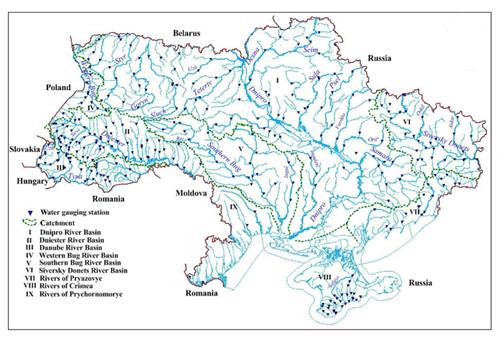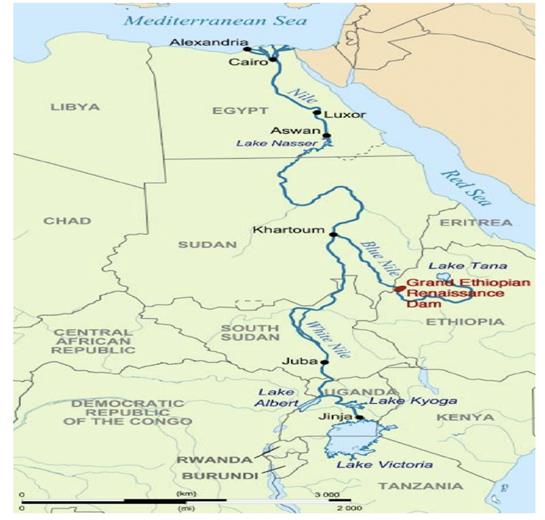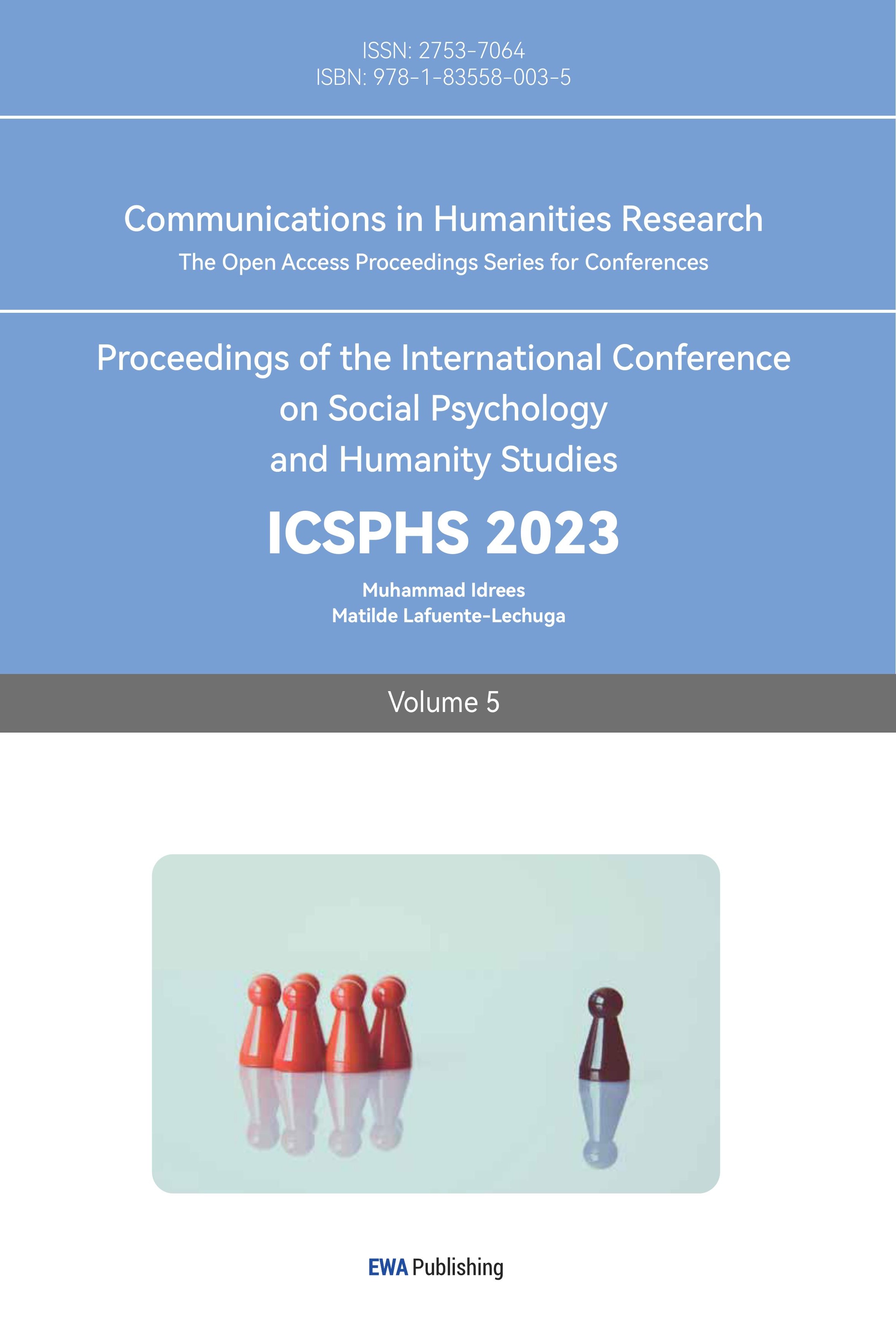1.Introduction
The Greek historian Herodotus produced many literary writings based on his extensive firsthand knowledge and field research. As a geographer, he was also keen on traveling to important historical sites and making insightful observations, and due to his contacts in numerous countries, Herodotus’s travels were mainly successful. Since he had a tremendous passion for the cultures of people in different countries, therefore, his literary compositions appear to be widely recognized as a source of actual historical evidence, especially regarding the Greece customs from 550 to 479 BC.
As the “Father of History,” Herodotus is perhaps best known for his descriptions of the geography and history of Persia and Greece [1]. As a result, many contemporary historians directly cite Herodotus’s book History. Few academics, however, have ever questioned the integrity of these works. This instantly intrigued me, leading me to research Herodotus’s works and analyses of certain modern scholars.
Herodotus must have made several excursions on land and during his travels along the Black Seacoast. He gathered information directly in Olbia, a Greek settlement on the edge of the Scythian territory. The value of his account is apparent through the fantastic combination of his observations with other people’s stories and the collected information.
Despite the convincing augments and comprehensive records, Herodotus’s works are not falsifiable. In other words, his descriptions of the Scythians are impossible to proven wrong. Simple observations of a particular phenomenon are not trustworthy, whereas many historical accounts did not even support Herodotus's writings. The Scythians had no papers, forcing contemporary scholars to overly depend upon Herodotus’s works. Fortunately, my focus on Herodotus’s descriptions of several Scythian burials and kurgan tombs allowed me to draw on thousands of archaeological records from the Black Sea to the East of China.
2.Herodotus’s Descriptions of the Scythians’ Development
Herodotus’s accounts of the Scythian burials were, by and large informative and relatively objective compared to other literary works, so these descriptions could be considered accurate. He wrote down almost precisely what he had observed, and by encountering mythical stories about the origin of the Scythians, Herodotus did effectively take them into account. This is remarkable, especially since the myths tend to contradict Herodotus’s perspective. He ingeniously distinguished and combined his rational analysis with stories by writing, “Such is the account which the Scythians give of themselves” and “which I am more inclined to put faith than in any other” [2]. He would genuinely admit his lack of familiarity with the Issedones cultures, all while introducing his portion of the history treat.

Figure 1: Hydrographic Zoning.
Additionally, Herodotus’s observations and works were remarkable in their level of detail. In his illustration of the Scythian people’s development, he attributed their mode of resisting military attacks of them to their country’s nature and their location on the intersected rivers. His interest and talent in geology elevated his historical work and increased the credibility of his descriptions. Modern research has identified these eight critical rivers, including the Ister and the Borysthenes, now known as the Danube and the Dnieper. The graph [3] below shows the two dominant rivers in the region labeled Ⅰ and Ⅲ. Hence, Herodotus’ field research and geological reports are trustworthy.

Figure 2: Map of the Nile River.
Furthermore, Herodotus conducted a truly astonishing number of investigations into these rivers and streams. He measured the fish abundance and taste of the water and the dimensions and connections among the tributaries. On the one hand, the documents Herodotus provided during his far-flung voyages were accurate and convincing. While recording the distance covered from the inland place Gerrhus to the sea, he pointed out that it was a forty-day trip by sea. Taking into account the length of the shallow streams, Herodotus would use measurements such as “a five day’s navigation” and “distance of four days” [4].
On the other hand, Herodotus tended to conceive the rivers as his knowledge of the European continent being less exact, which could have generated some confusion. An apparent misunderstanding appeared in Herodotus’s descriptions of the Ister’s tributaries. He assumed the two streams were similar in their dimensions, whereas the current research data shows otherwise. The Nile [5] and the Danube vary significantly in length, 6,650 km and 2850 km, respectively. The two graphs indicate a clear distinction between the Nile and Danube [6].

Figure 3: Map of the Danube River.
3.Herodotus’s Descriptions of the Scythians’ Burials
Many young historians, including myself, still regard Herodotus’s descriptions of the Scythian people with skepticism. As one reads through Herodotus’s writings, the question of how he learned this information frequently arises. Before jumping to conclusions, one should analyze the texts regardless of their connection with fiction or reality, especially those with modern research on navigable archaeological sites. More specifically, we should delve into Herodotus’s writing on the available individual burials. Since long-distance travel and access to these invaluable sites are challenging for a high school student, I decided to use more secondary sources to support my observations. The subsequent investigation was developed primarily from the ancient elements found in the tombs after excavations. Herodotus detailed descriptions of the equipment used throughout the funeral; some were carried directly into the burials. Whereas some uncertainty lies in the chronology, the information of the period could also be examined by the carbon dating process of those elements. Since Herodotus was born around 484 BCE, his investigations into the burials started around 450 BCE. As a result, the only evidence needed is the artifacts in the Scythian burials before the mid-fifth century. In Herodotus’s accounts, golden possessions such as cups, fixed spears on either side of the corpse, and horses were vital elements. Gold was the most valuable and crucial component of the burials, and the researchers at the Scythian burial mound in the northern Black Sea region discovered about hundred and eighty gold and silver objects [7] dated from 500 to 300 BCE. A gold clothing appliqué depicting two archers, shown below in Graph 4, was the most well-preserved artifact.

Figure 4: Gold Clothing Appliqué Depicting Two Archers.
Horse burials described by Herodotus were also confirmed by the archaeological investigation (Graph 5). Soldiers with spears and horses’ corpses could be found around the main chamber of the burials [8].

Figure 5: Plan of the Central Tomb and Horses’ tombs.
This evidence confirmed Herodotus’s overview of the burial elements and illustrated a controversial claim – the actual location of the Scythian kings in the tomb. He stated that the tombs of the kings would be the most remote of all, whereas the data on the sites proved otherwise. Consequently, despite Herodotus’s field research on the navigable land of the Gerrhi, it was plausible to state that he could make mistakes and record inaccurate information on Scythian burials.
4.Conclusion and Evaluations of Herodotus’s Works
Herodotus’s most famous work, “Histories," has been criticized by some scholars because it should be characterized only as a literary work as it was. The Russian historian Askold I. Ivantchik, on the other hand, once wrote, “We cannot ignore the fact that the author’s main goal, at least as declared in his own words, was the description of reality: in this particular case, a description of the Scythians.” [8]. Ivanchuk demonstrated the purpose and historical value of Herodotus’s entire work on ethnography (particularly on the Scythians). One can only fully understand Herodotus’s works after reckoning with the reasons and stories behind the historical content itself. Herodotus recorded precisely what he encountered and observed according to his explorations in field research. He always sought to portray the underlying nature of the subjects in his ethnographic descriptions.
Conversely, some scholars have introduced several provocative arguments regarding Herodotus. They claim that Herodotus was responsible for creating false references and that this behavior should be considered an intentional distortion of the ethnographic descriptions. These aggressive and critical accusations should be evaluated and judged with evidence, or to be specific, the comparisons between the Scythian burials and historical accounts from Herodotus about the formation and progression of the Scythians are essential. In this way, one should state that Herodotus could have been influenced by several factors: insufficient knowledge of the European inland region, less developed technology, personal engagement in the writings, and, most crucially, the influences from that particular era. As a result, we could learn more about the historical reality brought to light by reflecting on Herodotus’s accounts.
From my point of view, the value of these references lies in the particular purpose for which they are used. While Histories might be regarded as a literary work, while Herodotus himself might be known for his reputation for credulity, it did indeed reflect the traditions of the locals and the exact information collected. While Herodotus’s descriptions of the Scythians’ customs were abundant, there was little archaeological data to support them.
At the same time, Herodotus provided a wealth of ethnolinguistic details about various language groups, social structures, trade routes, and religious practices. As modern scholar Karen S. Rubinson has once made clear, Herodotus’s historical works, because of their extensive details, can be seen as accurate in recording intangible cultural phenomena as they are in documenting artifacts [9]. Moreover, the translator of Herodotus’s Histories extolled that it was a supreme work of inquiry [10]. He contends Herodotus made it possible for those who didn’t document their histories to be enshrined in the minds of more established peoples. Furthermore, Herodotus embraced a unique objective perspective in his works. According to Faustino Mora, a modern scholar at Brown University focusing on the Ancient Greek Culture, the sole purpose of Herodotus’ works shown explicitly was to “preserve the events for the Greeks and the barbarians to receive their due.” [11].
Upon reflection, Herodotus’s observations and writings should be considered historical evidence, but they should also be paired with more critically historical sources, particularly artifacts from that period. The contemporary archaeological evidence can confirm his works on Scythian burials, and his descriptions functioned as a reflection of the customs of the Scythians. Accordingly, through Herodotus's efforts to further rescue the Scythians from oblivion, cross-references can be made with the writings of his contemporaries. Herodotus's historical writings can and should be relied upon by modern scholars so long as the descriptions and sources are placed in the proper context. His historical works are invaluable in assisting modern scholars and offering a better understanding of the archaeological findings and excavation sites.
References
[1]. The Editors of Encyclopedia Britannica (2019) Herodotus | Biography, Histories, & Facts https://www.britannica.com/biography/Herodotus-Greek-historian.
[2]. Herodotus, George R., and Francis R. B. G. (1947) Herodotus: The Persian Wars
[3]. Liudmyla G. (2015) The Intra-Annual Streamflow Distribution of Ukrainian Rivers in Different Phases of Long-Term Cyclical Fluctuations https://doi.org/10.6001/ENERGETIKA.V61I2.3134.
[4]. Herodotus and Francis R. B. G. (1973) Herodotus: On the Scythians. The Metropolitan Museum of Art Bulletin 32, no. 5
[5]. https://doi.org/10.2307/3269235.
[6]. Woldeyohannes, Dr-Yohannes & Khalil, Alamgir & Salem, Hilmi (2017) Nile River's Basin Dispute: Perspectives of the Grand Ethiopian Renaissance Dam (GERD).
[7]. Schlattmann, Anna & Neuendorf, Felix & Burkhard, Kremena & Probst, Elisabeth & Pujades, Estanislao & Mauser, Wolfram & Attinger, Sabine & Haaren, Christina. (2022) Ecological Sustainability Assessment of Water Distribution for the Maintenance of Ecosystems, their Services and Biodiversity. Environmental Management. 70. 1-21. 10.1007/s00267-022-01662-3.
[8]. Aude M. (2017) Under the Microscope: The Oxus Treasure and Scythian Gold https://blog.britishmuseum.org/under-the-microscope-the-oxus-treasure-and-scythian-gold/.
[9]. Ivantchik A. (2018) The Funeral of Scythian Kings: The Historical Reality and the Description of Herodotus (IV, 71-72). Milton Keynes Uk: Lightning Source Uk Ltd., New York. 71–106.
[10]. Karen S. R. (1975) Expedition Magazine - Penn Museum https://www.penn.museum/sites/expedition/herodotus-and-the-scythians/.
[11]. Tom H. (2017) Darius, Herodotus and the Scythians https://blog.britishmuseum.org/darius-herodotus-and-the-scythians/.
[12]. Faustino M. (2007) Herodotus.
[13]. https://www.brown.edu/Departments/Joukowsky_Institute/courses/greekpast/4694.html.
Cite this article
Shen,J. (2023). An Evaluation of Herodotus’s Historical Descriptions of the Scythians to What Extent Are Herodotus’s Literary Works on the Scythians Credible?. Communications in Humanities Research,5,36-42.
Data availability
The datasets used and/or analyzed during the current study will be available from the authors upon reasonable request.
Disclaimer/Publisher's Note
The statements, opinions and data contained in all publications are solely those of the individual author(s) and contributor(s) and not of EWA Publishing and/or the editor(s). EWA Publishing and/or the editor(s) disclaim responsibility for any injury to people or property resulting from any ideas, methods, instructions or products referred to in the content.
About volume
Volume title: Proceedings of the International Conference on Social Psychology and Humanity Studies
© 2024 by the author(s). Licensee EWA Publishing, Oxford, UK. This article is an open access article distributed under the terms and
conditions of the Creative Commons Attribution (CC BY) license. Authors who
publish this series agree to the following terms:
1. Authors retain copyright and grant the series right of first publication with the work simultaneously licensed under a Creative Commons
Attribution License that allows others to share the work with an acknowledgment of the work's authorship and initial publication in this
series.
2. Authors are able to enter into separate, additional contractual arrangements for the non-exclusive distribution of the series's published
version of the work (e.g., post it to an institutional repository or publish it in a book), with an acknowledgment of its initial
publication in this series.
3. Authors are permitted and encouraged to post their work online (e.g., in institutional repositories or on their website) prior to and
during the submission process, as it can lead to productive exchanges, as well as earlier and greater citation of published work (See
Open access policy for details).
References
[1]. The Editors of Encyclopedia Britannica (2019) Herodotus | Biography, Histories, & Facts https://www.britannica.com/biography/Herodotus-Greek-historian.
[2]. Herodotus, George R., and Francis R. B. G. (1947) Herodotus: The Persian Wars
[3]. Liudmyla G. (2015) The Intra-Annual Streamflow Distribution of Ukrainian Rivers in Different Phases of Long-Term Cyclical Fluctuations https://doi.org/10.6001/ENERGETIKA.V61I2.3134.
[4]. Herodotus and Francis R. B. G. (1973) Herodotus: On the Scythians. The Metropolitan Museum of Art Bulletin 32, no. 5
[5]. https://doi.org/10.2307/3269235.
[6]. Woldeyohannes, Dr-Yohannes & Khalil, Alamgir & Salem, Hilmi (2017) Nile River's Basin Dispute: Perspectives of the Grand Ethiopian Renaissance Dam (GERD).
[7]. Schlattmann, Anna & Neuendorf, Felix & Burkhard, Kremena & Probst, Elisabeth & Pujades, Estanislao & Mauser, Wolfram & Attinger, Sabine & Haaren, Christina. (2022) Ecological Sustainability Assessment of Water Distribution for the Maintenance of Ecosystems, their Services and Biodiversity. Environmental Management. 70. 1-21. 10.1007/s00267-022-01662-3.
[8]. Aude M. (2017) Under the Microscope: The Oxus Treasure and Scythian Gold https://blog.britishmuseum.org/under-the-microscope-the-oxus-treasure-and-scythian-gold/.
[9]. Ivantchik A. (2018) The Funeral of Scythian Kings: The Historical Reality and the Description of Herodotus (IV, 71-72). Milton Keynes Uk: Lightning Source Uk Ltd., New York. 71–106.
[10]. Karen S. R. (1975) Expedition Magazine - Penn Museum https://www.penn.museum/sites/expedition/herodotus-and-the-scythians/.
[11]. Tom H. (2017) Darius, Herodotus and the Scythians https://blog.britishmuseum.org/darius-herodotus-and-the-scythians/.
[12]. Faustino M. (2007) Herodotus.
[13]. https://www.brown.edu/Departments/Joukowsky_Institute/courses/greekpast/4694.html.









